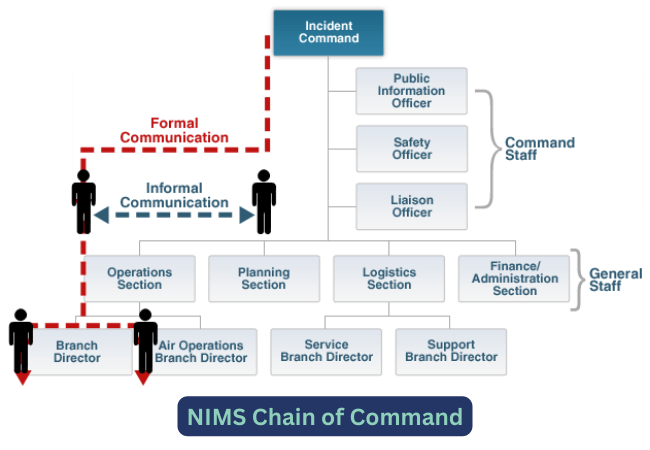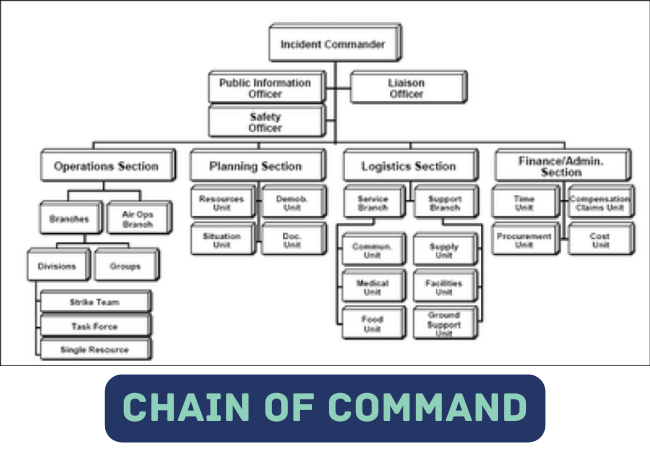Which of the Following is Not Part of the NIMS Management Characteristic of Chain of Command?

When evaluating the National Incident Management System (NIMS), understanding its management characteristics is key to grasping how it ensures effective incident response. Let’s dive into a common question: Which of the following is not part of the NIMS management characteristic of chain of command? Here are the options:
- A. Enables the Incident Commander to manage the actions of personnel under their supervision.
- B. Restricts personnel from sharing information with each other.
- C. Eliminates confusion by ensuring that orders come from supervisors.
- D. Outlines the flow of authority within the incident management organization.
Correct Answer: B. Restricts personnel from sharing information with each other.
You might wonder why this is the correct choice. To answer that, we need to explore what the chain of command means within NIMS and why restricting information-sharing doesn’t align with its principles. Let’s break it down.
What Is the NIMS Management Characteristic of Chain of Command?
The chain of command in NIMS refers to a structured hierarchy where authority and responsibility flow in an organized manner. Specifically, the NIMS management characteristic of chain of command and unity of command means that each person reports to only one designated supervisor. This clear line of reporting eliminates confusion, ensures accountability, and streamlines decision-making during an incident.
Unlike a flat organizational structure where everyone reports to a single leader, the chain of command establishes a tiered system. For example, a firefighter reports to a crew leader, who reports to an operations chief, who in turn answers to the Incident Commander. This setup ensures that everyone knows who to turn to for guidance or approvals, fostering clear communication across departments and roles.
NIMS outlines a total of 14 management characteristics that guide incident response, including chain of command, accountability, and comprehensive resource management. Each characteristic plays a unique role in maintaining order and efficiency, but chain of command stands out for its focus on authority and direction.
The Principles and Benefits of Chain of Command
At its core, the chain of command defines a hierarchy where authority starts at the top—typically the Incident Commander—and flows downward through designated roles. This structure isn’t just for emergencies; businesses, government agencies, and other organizations use it to maintain order and boost efficiency.
So, what makes it so valuable? Here are some key benefits:
- Clarity and Reduced Misunderstandings: When supervisors issue clear instructions and everyone understands their role, teams can work toward shared goals without stepping on each other’s toes. This reduces misunderstandings about supervisory directives and keeps operations running smoothly.
- Improved Efficiency: Managers can delegate tasks confidently, knowing who’s responsible for what. For instance, acquiring, storing, and inventorying resources—part of the NIMS management characteristic of comprehensive resource management—relies on a clear chain of command to assign these duties effectively.
- Minimized Conflicts: A well-defined hierarchy reduces disputes among employees by clarifying responsibilities. If everyone knows how their role fits into the bigger picture, there’s less room for overlap or confusion.
- Lower Risk: With a clear chain of command, accountability is baked into the system. Employees know who’s in charge, reducing the likelihood of missteps that could derail the response effort.
- Simplified Training: New or promoted team members can quickly learn their place in the structure, making onboarding more efficient.
Another key NIMS characteristic tied to chain of command is accountability, which includes developing and issuing assignments, tracking personnel, and ensuring check-in/check-out procedures. Together, these principles create a cohesive framework for managing complex incidents.
Why Doesn’t Restricting Information-Sharing Fit?
Now, let’s address the original question: Why is restricting personnel from sharing information with each other excluded from the NIMS chain of command? The answer lies in NIMS’ emphasis on collaboration and communication.
NIMS doesn’t prohibit information-sharing among personnel—quite the opposite. It encourages agencies to use a common language and terminology to ensure seamless coordination. While it advises against sharing sensitive details outside an agency unless necessary (e.g., a fire department withholding tactical plans from police unless requested), internal communication is vital. The Incident Commander and all personnel need a shared understanding of roles, responsibilities, and the overall response plan to succeed.
The Importance of Information-Sharing
Imagine an emergency where responders can’t communicate freely within their teams. Chaos would ensue. NIMS recognizes that sharing information ensures the Incident Commander has the full picture to make informed decisions. It also empowers personnel to understand how their tasks—like executing assignments issued under the chain of command—fit into the broader effort.
Risks of Restriction
Restricting information-sharing poses serious risks. If command staff lack critical updates, their ability to strategize erodes. First responders, too, might operate with incomplete data, hampering their effectiveness. In short, limiting communication undermines the very efficiency and clarity that chain of command seeks to achieve.
Conclusion
So, which of the following is not part of the NIMS management characteristic of chain of command? The answer is clear: restricting personnel from sharing information doesn’t belong. Chain of command thrives on structure, accountability, and open communication—not barriers. With 14 NIMS management characteristics working together, including accountability and resource management, this system ensures incidents are handled with precision and unity.
FAQs
Q1: What Is the Main Duty of ICS Leadership?
ICS leadership, including the Incident Commander, coordinates all parties in an emergency response. To do this effectively, they need comprehensive information to make sound decisions and guide the team.
Q2: How Many NIMS Management Characteristics Are There?
There are 14 NIMS management characteristics, including chain of command, accountability, and incident action planning, all designed to streamline incident management.
Q3: Which Item Is Included in the NIMS Management Characteristic of Accountability?
Accountability includes developing and issuing assignments, tracking personnel, and maintaining clear records—ensuring everyone’s contributions are documented and effective.
Q4: Which NIMS Management Characteristic Includes Developing and Issuing Assignments?
That would be accountability. It ensures tasks are assigned clearly within the chain of command, keeping the response on track.
Q5: Acquiring, Storing, and Inventorying Resources Are Part of Which NIMS Management Characteristic?
These fall under comprehensive resource management, which relies on the chain of command to delegate and oversee resource-related tasks efficiently.
Q6: How Can ICS Leadership Reduce Uncertainty During an Emergency Response?
By ensuring all personnel have access to relevant information, ICS leadership minimizes guesswork, enabling informed decisions and a cohesive response.





